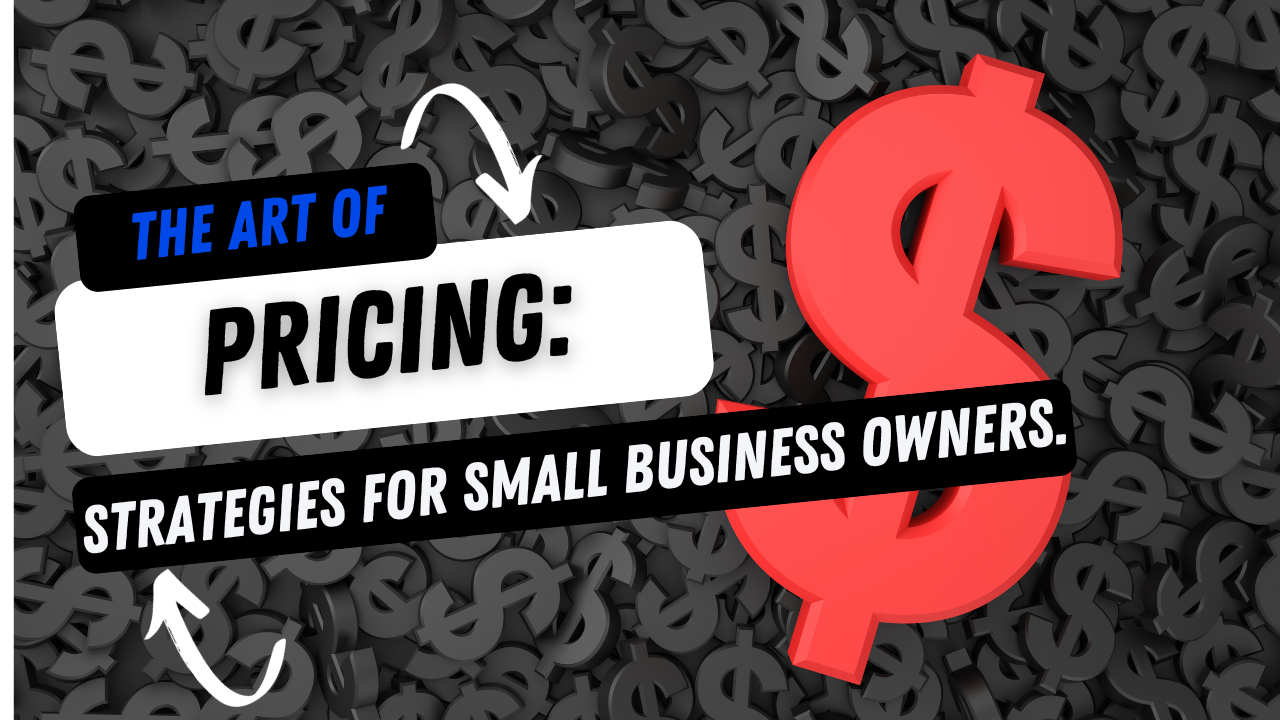The Art of Pricing: Strategies for Small Business Owners

Figuring out the right prices can be a real headache for small businesses. Charge too much, and you'll scare away your customers. Charge too little, and you'll end up eating more instant noodles than a college dorm room during finals week. It's a make-or-break decision that can impact your profitability. To help you out, we've put together this blog post to help small business owners get a better handle on pricing strategies. Give it a read and see how it can benefit your bottom line.
Understanding Your Costs:
Before diving into pricing strategies, it's essential to understand your costs. Calculate the cost of goods sold (COGS) and consider overhead expenses. This includes production costs, labor, rent, utilities, and more. Knowing your costs provides a baseline for pricing that ensures you cover expenses.
Market Research:
Conduct thorough market research to understand your competitors and target audience. What are similar businesses charging for similar products or services? What value are you providing that differentiates your offering? By knowing what the market will bear, you can set prices that are competitive yet profitable.
Value-Based Pricing:
Consider adopting a value-based pricing strategy. This approach focuses on the perceived value of your product or service to your customers. If your offering provides unique features or solves a particular problem, you can justify a higher price point. Highlight these value propositions in your marketing materials.
Pricing Models:
Explore various pricing models to determine what suits your business best. Some options include cost-plus pricing, where you add a markup to your costs, and dynamic pricing, which adjusts based on demand. Subscription-based pricing can also work well for certain services. Experiment and see what aligns with your business model.
Tiered Pricing:
For businesses with multiple products or services, tiered pricing can be effective. Create different packages or tiers to cater to a wider range of customers. Each tier should offer distinct benefits, allowing customers to choose the level of service that suits their needs and budget.
Psychological Pricing:
Consider the psychological aspect of pricing. Instead of pricing an item at $10, consider pricing it at $9.99. This pricing technique, known as charm pricing, can make your products appear more affordable and appealing to consumers.
Bundling and Cross-Selling:
Bundling related products or services can increase your average transaction value. Likewise, cross-selling complementary items to customers who've already made a purchase can boost your revenue. Both strategies can help you maximize sales without drastically changing your pricing.
Discounts and Promotions:
Offer discounts and promotions strategically. Limited-time offers, flash sales, and loyalty programs can incentivize customers to make a purchase. However, ensure that your discounts don't erode your profit margins, and carefully track the results of your promotions.
Regular Price Reviews:
Pricing is not a set-it-and-forget-it process. Regularly review your pricing strategy, especially when you introduce new products or face changes in your costs or the market. Flexibility and adaptability are crucial to pricing success.
The art of pricing is a dynamic and essential skill for small business owners. Finding the right balance between profitability and customer satisfaction requires a strategic approach. By understanding your costs, conducting market research, and experimenting with different pricing strategies, you can optimize your prices for success. Regularly evaluate your pricing strategy, and remember that pricing isn't just about numbers; it's about providing value to your customers while ensuring the sustainability of your business.
Looking for more on the topic of pricing? Don’t miss this episode of The Liquid Lunch Project with Per Sjofors, The Price Whisperer. LISTEN HERE



